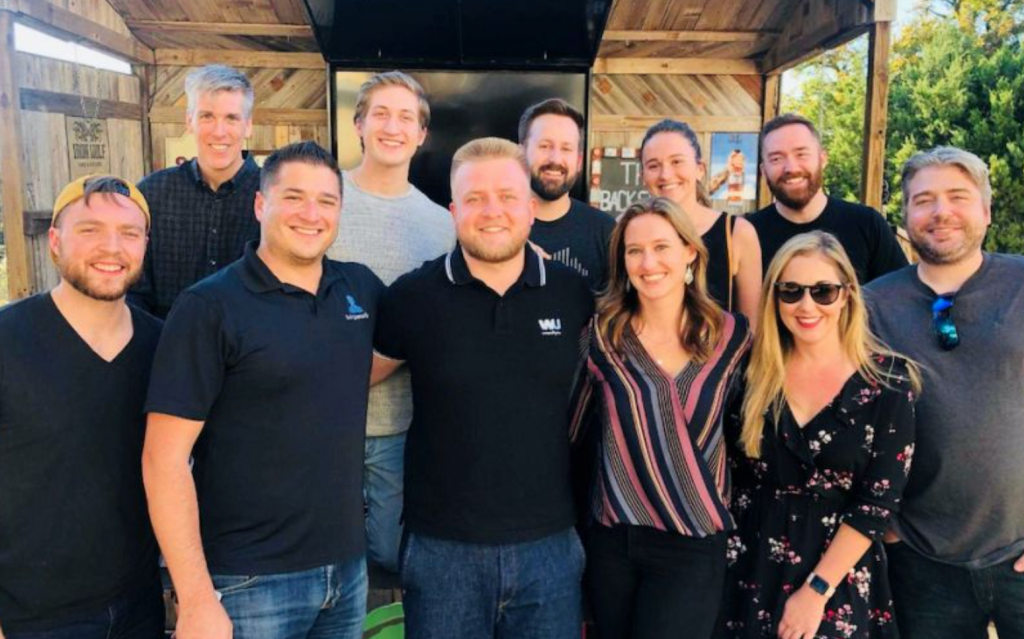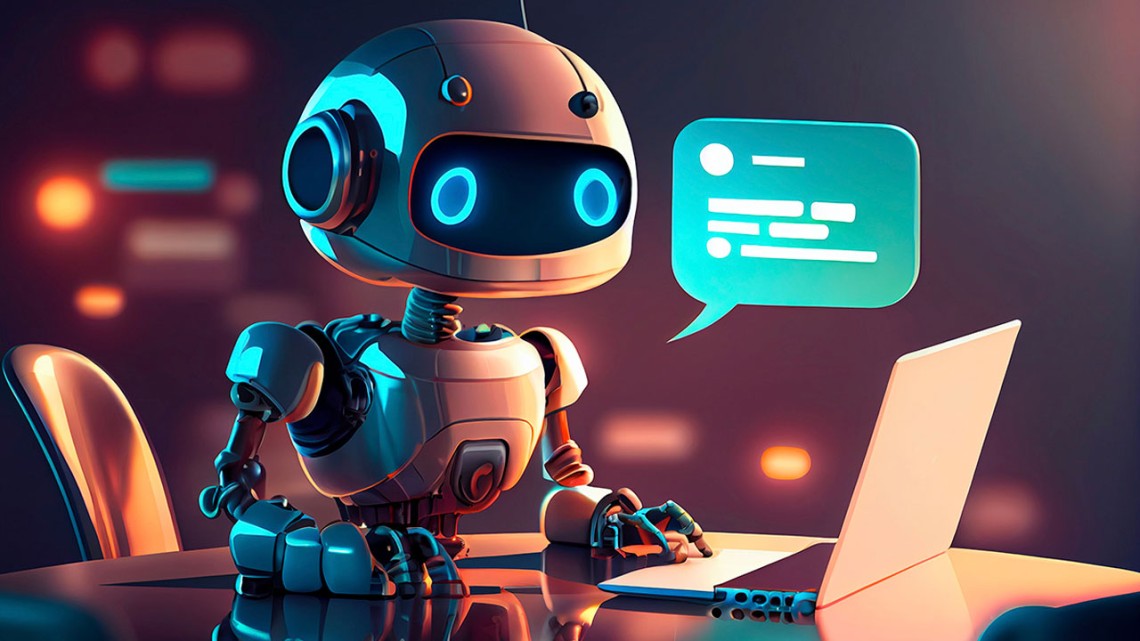Personalized learning has long been the goal in education, but with conventional systems, achieving it at scale has been nearly impossible. Educators often face the challenge of adapting curricula to diverse learning needs, while institutions struggle to keep students engaged and performing at their best. When learning experiences feel too generic or out of sync with individual progress, outcomes suffer.
That’s where AI has become a game-changer. In 2025, 57% of higher education institutions are expected to prioritize AI-powered personalization, up from 49% last year. On the ground, results are tangible: in Georgia, a national LMS with adaptive AI raised K–12 pass rates by 15% for 200,000 students; a smaller-scale pilot showed 8% test score gains across 50 schools.
At WeSoftYou, we’ve helped build personalized learning platforms powered by AI that are fast, accessible, and student-first. In this guide, we’ll show you what it takes to develop one, from smart tech choices to adaptive UX, and why thoughtful implementation makes all the difference.
What Makes a Learning Platform “Personalized”?
Personalization in modern learning platforms goes far beyond offering students a menu of courses. At its core, it means tailoring the content, pace, and delivery style to match an individual’s unique learning profile, including their prior knowledge, skill gaps, preferred formats, and even emotional cues.
Rather than serving static content, AI-powered platforms adapt in real time. This is where personalized learning plan software plays a critical role: it uses data from user interactions to continuously refine the learning journey, whether that means slowing down for foundational reinforcement or surfacing more advanced material to maintain challenge and engagement. For learners, the result is a more intuitive experience that feels like it’s built for them, not just anyone.
Global Momentum Behind Personalized AI Learning Platforms
The rise of personalized learning is gaining momentum worldwide, with over 120 countries integrating AI into their education systems. Notably, Singapore’s Adaptive Learning Initiative achieved a 31% improvement in math outcomes within its first year, showcasing how AI can drive real educational impact.
Looking ahead, nearly 47% of all learning management systems are expected to be AI-powered by 2027. This rapid adoption signals a structural shift in how learning experiences are being built: tailored, dynamic, and deeply learner-centric.
Key AI Technologies Driving Personalization
Personalized learning software relies on a blend of advanced AI technologies that work behind the scenes to create more intuitive and responsive experiences for students. Here are the core components that make it possible:
Machine Learning as The Engine Behind Smart Adaptation
Machine learning (ML) enables platforms to adapt in real time to a learner’s needs. By analyzing patterns in student behavior (such as quiz performance, content navigation, and engagement duration), ML models can predict the most effective next steps. This includes suggesting specific exercises, adapting content complexity, or flagging at-risk learners before performance drops. As the system collects more data, its predictions become more accurate, continually refining the learning journey to suit each individual.
Natural Language Processing (NLP) to Make Learning Conversations Natural
NLP helps bridge the gap between human communication and machine understanding. It powers features like chat-based tutoring, AI writing feedback, content summarization, and auto-grading. Learners can ask questions using natural language and receive intelligent, context-aware responses. It also enables speech-to-text, multilingual support, and accessibility enhancements, ensuring inclusive learning experiences.
Recommendation Engines for Personalized Pathways Through Content
Recommendation engines function like an intelligent GPS for learning. Based on user history, performance, and interests, they suggest personalized courses, readings, and practice activities. They also optimize content sequencing, ensuring that learners revisit weak areas while progressing steadily through new topics. These engines are central to keeping learners engaged without overwhelming them.
Computer Vision that Measures Engagement Beyond Clicks
Computer vision goes beyond tracking mouse clicks and page visits; it interprets facial expressions, eye movement, and posture to gauge focus and emotional state. This insight is especially useful in virtual classrooms and assessments, allowing systems to detect fatigue, distraction, or confusion and adjust content delivery accordingly.
Adaptive Testing for Real-Time Calibration of Assessment Difficulty
Adaptive testing uses AI to adjust the difficulty of questions in real time based on a learner’s previous answers. This ensures that assessments are neither too easy nor too hard, giving a more accurate representation of a learner’s abilities. It also shortens test duration by focusing only on what’s necessary to assess mastery.
How We Apply These Technologies
At WeSoftYou, we design learning environments that actively respond to individual student needs. In projects like LUCA.ai, a reading platform supporting children with dyslexia, we combined machine learning, NLP, and adaptive testing to create a deeply personalized experience that adjusts content in real time based on each learner’s interaction patterns.
Our team has implemented recommendation engines that suggest exercises, stories, or assessments tailored to reading levels and interests, helping maintain motivation across diverse learners. In parallel, computer vision prototypes have helped measure student focus and engagement during digital sessions, supporting educators in early intervention.
We approach AI not as a trend, but as a toolkit for empathy at scale, designing platforms that listen, learn, and adapt to each student.
Step-by-Step Approach to Building a Personalized Learning Software
Creating a truly personalized AI-powered learning platform requires a well-structured development process that aligns technology with pedagogy. In this section, we’ll walk through the essential stages, from defining learning goals and mapping user flows to selecting the right AI models and launching with feedback loops in place.
1. Define Your Target Audience and Learning Goals
Before writing a single line of code, you need to understand who you’re building for and why. Is your platform supporting K–12 learners, university students, corporate teams, or adult upskillers? Each audience comes with unique learning behaviors, goals, and expectations.
For example, academic platforms often prioritize curriculum alignment, formative assessments, and engagement tools suited to younger users. In contrast, corporate learning systems typically emphasize real-time performance tracking, certification, and ROI on training investments.
Our team always starts with detailed audience segmentation and goal-setting leads to better product-market fit. In our projects, we often run early-stage discovery workshops and user interviews to surface valuable insights about learner motivations, challenges, and digital habits. This foundational step ensures the resulting product meets real-world needs—not assumptions.
2. Collect and Structure Learner Data Responsibly
Personalization hinges on data, but so does trust. To deliver tailored learning experiences, platforms must collect and interpret information on how learners engage, what they prefer, and where they struggle. This insight forms the backbone of intelligent content delivery and adaptive assessments.
Key data sources typically include:
- Assessment results – Quiz scores, test outcomes, and performance trends over time.
- Engagement metrics – Time spent on lessons, drop-off points, video interaction, and navigation patterns.
- Behavioral signals – Click sequences, device usage, learning path deviations.
- User input – Self-reported learning goals, content preferences, or areas of interest.
But effective personalization is impossible without privacy-conscious design.
How we approach privacy in AI-powered personalized learning platforms
Our approach is to prioritize secure data architecture from day one. To do this, we build encrypted pipelines with role-based access, anonymize personal identifiers, and ensure compliance with GDPR, CCPA, and other international standards. Our teams also work closely with legal and data governance experts to design transparent user consent workflows, because learners engage more when they know their data is safe and meaningful.
3. Develop Adaptive Learning Algorithms
A personalized platform is only as smart as the engine behind it. At its core, adaptive learning relies on machine learning models that interpret learner data in real time and adjust the learning journey accordingly, ensuring every student receives the right content, at the right time, in the right format.
Common AI techniques that power adaptive platforms include:
- Collaborative Filtering. Recommends content based on patterns from learners with similar behaviors, preferences, or goals—enabling peer-informed personalization.
- Reinforcement Learning. Continuously learns from user feedback and behavior, optimizing what content is shown next based on what produces the best outcomes.
- Clustering Algorithms. Groups learners into segments based on their skill level, pace, or style, tailoring delivery modes and resource formats accordingly.
All these techniques need to combine practical AI techniques with real-world input from educators. That’s where we excel. Our team trains and refines models based on actual learner outcomes, not just accuracy in a lab, so the personalization feels natural, helpful, and genuinely effective.
4. Design an Intuitive and Engaging User Interface
Even the most powerful AI systems lose impact if the interface is hard to navigate. A successful personalized learning program should feel easy, engaging, and motivating, whether learners are accessing it on a desktop, tablet, or phone.
Key UI considerations:
- Responsive layout that adapts smoothly across devices and screen sizes
- Progress indicators and achievement tracking that help learners see where they’re going
- Interactive modules like quizzes, video-based tasks, or peer discussion areas
- Built-in accessibility features, including screen reader support and customizable text
In our experience, integrating conversational AI tools, like in-app tutors or support bots, greatly improves retention and learner satisfaction. You can also apply gamification techniques where appropriate.
5. Integrate Analytics and Reporting Tools
A personalized platform isn’t complete without visibility into how learners are progressing and where support is needed. Robust dashboards should offer real-time data for both learners and educators, making outcomes measurable and feedback loops continuous.
Key features to prioritize:
- Visual learner progress tracking over time
- Content engagement metrics to identify what works
- Early warnings for at-risk learners with suggested interventions
- Comparative group performance insights for educators
Make sure your analytics tools plug directly into AI learning engines, translating raw interaction data into clear, actionable insights.
6. Ensure Scalability and Flexibility
As your platform attracts more learners and content, performance can’t become a bottleneck. A resilient backend architecture ensures your system remains fast and reliable, whether serving 100 or 100,000 users.
Scalability essentials:
- Cloud-native infrastructure that auto-scales with demand
- Microservices for modular growth and easier updates
- Seamless integration options with LMS, HRIS, or content providers
- Support for new AI models or interaction formats over time
Our engineering teams at WeSoftYou build adaptive platforms using technologies like Docker, Kubernetes, and scalable APIs. This ensures your solution evolves alongside your vision.
Challenges and Best Practices in Developing Personalized Learning Platforms with AI
Personalized AI learning platforms hold incredible promise. Nonetheless, delivering on it takes more than just smart tech. It means grappling with messy data, safeguarding user privacy, balancing automation with real human connection, and designing systems that work for real learners. Let’s walk through the most common challenges teams face and the practices that have helped us and our clients build platforms that are intelligent, but genuinely useful, scalable, and trusted by the people who use them.
Data Privacy and Ethical AI Use
When personal data fuels personalization, trust becomes a cornerstone. Beyond meeting legal standards like GDPR or CCPA, ethical AI means designing systems that are fair, transparent, and inclusive.
This includes actively preventing bias in algorithms and ensuring learners from all backgrounds have equal opportunities for success.
How We Design for Privacy Without Compromising Personalization
Our approach lies in building secure data pipelines from day one, applying anonymization at the data collection layer, not just in reporting. We implement fine-grained consent management and role-based access control (RBAC) across all user types. For K–12 and healthcare learning platforms, we also support parent or guardian approval workflows tied to content access.
Our Bias-Prevention Framework During Model Training
Rather than relying solely on post-launch audits, we train AI models with segmented datasets that represent various user demographics and learning profiles. We use synthetic testing scenarios to stress-test edge cases and avoid outcome bias, particularly in adaptive assessments or recommendation engines.
Balancing Automation with Human Touch
AI excels at delivering scale and efficiency, but learning is also emotional and social. While automation helps personalize the path, real educators guide, motivate, and support learners in ways machines can’t. The most effective platforms amplify human strengths rather than replacing them.
When to Let Humans Override AI
We always give educators the ability to override AI-driven learning paths and content recommendations. From experience, we’ve seen this boost trust and engagement. For example, in one adult learning platform, allowing mentors to “nudge” content manually increased learner retention by 19% over six months.
How We Build Human Touchpoints into Every Experience
Live teacher dashboards with AI-powered alerts are built into the LMS platforms, but so are peer discussion forums, mentor chats, and emotional check-ins. We believe every AI insight should trigger human action, not just a UI notification. One feature we often implement: an “Ask for Help” button that routes struggling learners directly to real instructors with context-aware history.
Continuous Improvement Through Feedback Loops
Personalization isn’t set-and-forget. For AI systems to evolve meaningfully, they need to learn not only from usage data but also from people. Regularly collecting feedback from both learners and educators allows teams to refine UX, tweak models, and respond to real-world needs.
Our Approach to Building a Feedback-Driven Platform
We implement continuous learner feedback loops, short post-module surveys, emoji-based sentiment scoring, and auto-flagging of skipped materials. This helps refine content and ML outputs dynamically. Our platforms log not just performance, but confidence levels and pacing patterns, which educators can access in real time.
WeSoftYou’s Best Practices for A/B Testing Personalization
In AI-driven education, it’s not enough to test content. We run side-by-side tests on algorithm behavior itself; for example, by comparing different reinforcement learning models for adaptive quizzes. Our DevOps team sets up sandboxed experiments, tracking long-term learning outcomes instead of short-term engagement alone.
Case Studies: Successful Personalized AI Learning Platforms
Real-world examples bring the power of AI personalization to life. That’s why you should explore how forward-thinking organizations have turned vision into results, using AI to tailor learning paths, boost engagement, and improve outcomes across diverse audiences.
Duolingo: Gamified Language Learning at Scale
Duolingo has scaled to over 500 million users by pairing adaptive learning algorithms with gamification to deliver a deeply personalized language-learning experience.
Its AI engine, Birdbrain, continuously adjusts lesson difficulty based on learner performance, using spaced repetition and predictive modeling to improve retention. Natural language processing helps content creators refine grammar and vocabulary coverage across 40+ languages, ensuring relevance for both beginners and advanced users.
Gamification elements like streaks, leaderboards, and XP rewards foster habit formation and long-term motivation. This combination of AI precision and engaging UX has paid off; user churn dropped from 47% in 2020 to 37% in 2023. Studies also show that over 80% of learners find the experience enjoyable, thanks to its adaptive, game-like structure.
Coursera: Tailored Professional Development
Coursera’s platform blends AI-driven personalization with enterprise-grade infrastructure to help learners achieve real-world career outcomes. Its machine learning algorithms recommend curated course paths based on user goals, skills, and job roles, whether you’re training to become a data scientist or pivoting into cybersecurity.
Coursera Coach, a generative AI assistant, enhances the experience further by providing multilingual, real-time support through summaries, personalized explanations, and tailored resources. AI also powers translation for thousands of courses and streamlines peer grading for more consistent, actionable feedback.
This approach delivers measurable impact. According to Coursera’s global learner survey, 77% of users reported tangible career benefits, such as promotions or new roles. In developing economies, that number rose to 91%.
Why Partner with a Software Development Company Like WeSoftYou?
Building a personalized AI-driven learning platform takes more than great tech; it also requires the right blend of educational insight, user empathy, and long-term scalability. That’s where an AI development company like WeSoftYou makes a real difference.
Our team blends strong technical execution with real-world education insight. Apart from deploying AI, we align it with learner outcomes, privacy regulations, and the human aspects of how people engage with digital content.
What Sets Us Apart
- Deep Experience in AI-Powered EdTech. From K-12 to corporate learning, we’ve delivered platforms that personalize at scale, integrate seamlessly with LMS tools, and generate real-world learning outcomes.
- Speed Without Sacrificing Quality. Thanks to our agile development approach and a vetted team of top 3% engineers, we consistently deliver full platforms in record time—without cutting corners.
- Human-Centered Product Thinking. We work with educators, product owners, and learners—not just code. This ensures that what we build reflects real classroom or training dynamics.
- Secure and Compliant by Design. We bake in GDPR, FERPA, and other compliance requirements early—ensuring that data pipelines, user profiles, and reporting tools meet global standards.
- Recognized for Innovation. WeSoftYou has been named “Innovator of the Year,” listed among the top EdTech and AI developers globally, and consistently ranks in the top 1% on Clutch.
Conclusion
Creating a truly personalized AI-powered learning platform means understanding how people learn, what keeps them motivated, and where technology can gently guide without overwhelming. It’s about using data responsibly to support growth, designing interfaces that feel intuitive and welcoming, and making sure the platform adapts to real people, not the other way around. When personalization is implemented with care, it opens up space for learners to feel seen, supported, and empowered to move forward at their own pace.
At WeSoftYou, we approach this work with a deep respect for both the learner and the craft. We’ve helped build platforms that serve children overcoming dyslexia and professionals advancing their careers. Behind these solutions are technology that quietly works in the background to make every interaction more meaningful.
If that’s the kind of platform you’re looking to build, we’d be glad to talk.
Frequently Asked Questions (FAQ)
What is the typical timeline for developing a personalized AI learning platform?
Development timelines vary based on scope and complexity but generally range from 6 to 12 months for a minimum viable product (MVP). Iterative improvements and feature additions continue beyond launch. The initial phase often involves extensive research and planning, including identifying user needs and defining the core functionalities of the platform. Following this, the design and development stages focus on creating a user-friendly interface and robust backend systems that can handle the intricacies of personalized learning. Testing phases are crucial, as they ensure that the platform is not only functional but also engaging and intuitive for users.
How do you ensure data privacy and security in AI learning platforms?
We implement encryption, access controls, anonymization, and compliance with regulations such as GDPR and CCPA. Regular security audits and ethical AI practices are integral to our development process. Additionally, we educate users about best practices for data privacy, encouraging them to take an active role in managing their information. This includes providing clear options for data sharing and the ability to opt out of data collection when desired. By fostering transparency and trust, we aim to create a secure environment where learners feel safe to engage with the platform.
Can AI replace human teachers in personalized learning platforms?
AI enhances personalization but does not replace the human element. Teachers provide mentorship, emotional support, and complex guidance that AI currently cannot replicate fully. The role of educators is evolving; they are now seen as facilitators who leverage AI tools to tailor learning experiences. This collaboration allows teachers to focus on fostering critical thinking and creativity, while AI handles data analysis and routine tasks. Furthermore, the human touch is essential in addressing the diverse emotional and social needs of learners, creating a holistic educational experience that AI alone cannot provide.
What kind of data is needed to train AI models for personalization?
Data includes learner demographics, interaction logs, assessment results, preferences, and feedback. The quality and diversity of data significantly impact AI effectiveness. Moreover, incorporating various data sources, such as social interactions and learning styles, can enhance the model’s ability to predict and adapt to individual learning paths. Continuous data collection and analysis allow the AI to refine its recommendations over time, ensuring that the learning experience remains relevant and engaging. By leveraging rich datasets, we can create a more nuanced understanding of each learner’s journey, ultimately leading to better educational outcomes.
How scalable are AI-powered personalized learning platforms?
With cloud infrastructure and modular architectures, AI learning platforms can scale to support millions of users globally while maintaining performance and personalization quality. This scalability is achieved through the use of advanced algorithms that optimize resource allocation and user experience in real-time. As demand grows, the platform can dynamically adjust its capabilities, ensuring that all learners receive timely feedback and support. Additionally, scalability also involves the integration of new features and content, allowing the platform to evolve alongside educational trends and technological advancements. This adaptability is key to meeting the diverse needs of learners across different regions and educational contexts.





















